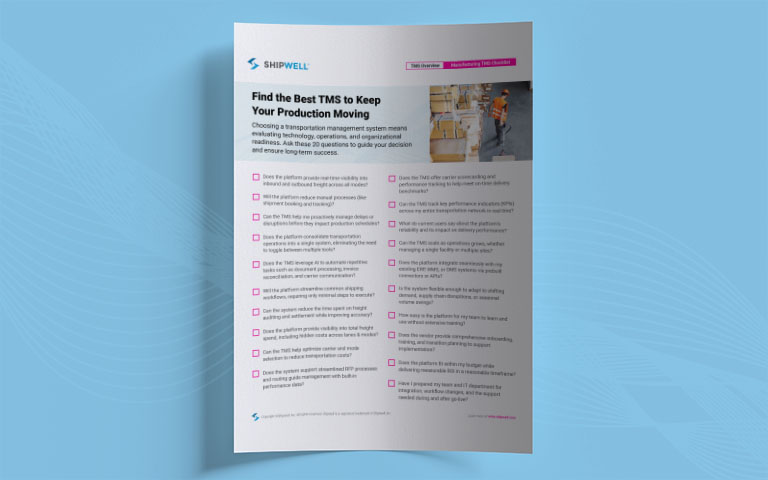Quantity vs. Quality: Data in Supply Chains

The volume of IoT devices connected to the internet will reach 20.4 billion by next year. Current iterations of artificial intelligence (AI) and machine learning tools are able to discover and acquire valuable data that normally would go unnoticed.
But let's take the technical talk down a notch. What does this mean for supply chains?
Think about when kids would collect baseball cards back in the day. They would have to buy dozens if not hundreds of cards just to be able to improve their chances of getting that rare card. Maybe it was a rookie Ken Griffey Jr., or perhaps the ultra-valuable Honus Wagner. Because of the nature of the quality of the card, kids had to purchase and collect mountains of regular cards.
Data is the same way, and we need to determine how to either effectively gather high-quality data or analyze large batches of data at faster rates to find the good stuff.

In a recent Technative article, AI and machine learning can provide remarkable information that can be actionable and insightful. However, bad data can produce results that are misleading and take time and money away from a company attempting to be resourceful.
"In the context of AI and machine learning, bad data also means solving for clean data capture. Companies have to lay a foundation," says Ryan Schreiber of CarrierDirect
Data and the freight industry
One of the biggest problems the freight world has with getting actionable analytics is that the data is not centralized.
A lot of carriers and logistics professionals still default to keeping their spreadsheets, logbooks, and bookkeeping on pen and paper.
Those that manage to keep their documents on a computer don't publish them on the internet for sharing between parties.
This sort of decentralization is what makes acquiring good data so difficult in the first place.
See how actionable analytics can grow your business
Data-driven decisions need good data
Obviously, the more high-quality data you have, the better you can run your business. Knowledge is power.
However, try not to get overwhelmed by the perceived complexity of applying things like AI and machine learning to your data. There are solutions in the supply chain that help businesses of all sizes better process massive amounts of data and make actionable decisions.

Here at Shipwell, we employ AI and machine learning to provide shippers, 3PLs, and carriers a managed freight platform that fits in a single pane of glass. With so many data points being generated across every single shipment, collecting and analyzing this information in an easy-to-digest way is critical.
How fast should your AI tools update your collected data for analysis? As close to real-time as possible. Supply chain pros need the most accurate, recent data to make the best decisions for their business.
"Solving the problem of data latency is a huge advantage in transportation. Take a simple example of spot market pricing, greater data latency means a much murkier picture of the current state of the market when making a spot-pricing decision" Schreiber states.
Shipwell analytics are now powered by Snowflake. Users now enjoy real-time data loading times for analytics -- 10x faster than previously available. Get a demo and see analytics in action.
Sharing data the right way
Dealing with data silos is a rampant issue not confined to just the transportation industry. When data or insights from that data isn't shared with every party involved in the supply chain, it prevents organizations from seeing the big picture.
Some companies can be too protective of the "good data" that they collect and won't stare for the greater good.
"Companies need to take a look at their data and understand that all data is not created equal. Hoarding all your data puts you at a competitive disadvantage," Schreiber states.
"Should you expose your customer lists? No, of course not. But no one in this industry is a market-maker and understanding how your data increases in value when you expose it in a safe, anonymized way is essential."
What the future holds for data sharing
To be able to make meaningful and impactful decisions, we need a lot of data from thousands of data points and perspectives for input.
Here's a great example of this in action.
Recently, Shipwell's CEO and Cofounder, Greg Price, spoke at TransparencyWaves19 about how we are already experimenting with quantum computing.
Shipwell used IBM Q's Melbourne 14 to test out a simple problem and it solved it in seconds. With quantum computing, massive amounts of data points could be solved in minutes and the freight industry would look a lot different.
In our experiment, we leveraged the massive power of a quantum computer to analyze large amounts of data faster than a classical algorithm could. It proved successful using our own data from real Shipwell-booked shipments.
Imagine a world where a supercomputer can solve asset routing and capacity optimization on a much larger global scale.
For all parties to benefit from this new technology on the horizon, massive amounts of data must be collected and shared for AI and machine learning to process.
Ready for not, data is what is propelling today's businesses into greater efficiency and profits. And while these high tech solutions have their limitations, the human element of data sharing and collaboration is paramount.
The real-world benefits to sharing data today
What happens when carrier ELDs are connected to Shipwell to provide data sharing?
Carriers often drive with an empty truck for miles to pick up a load, called deadheads. Because of location, equipment, and lane information shared with Shipwell, we created a carrier matching algorithm to recommend the best carrier to the best-matching load to reduce deadheads, keep trucks full, and help shippers and 3PLs move their freight.
Another way Shipwell uses shared data to benefit everyone in the supply chain is geofencing. When carriers download the free Android or iOS Shipwell mobile app, it adds another level of transparency during shipments. As carriers enter and exit a 1,000-meter geofence around a pickup or delivery location, the shipment status automatically updates from in transit to at pickup or delivery.

Plus, when carriers provide in and out time window, detention durations are accurate down to the minute. Carriers get reimbursed faster, and shippers/3PLs are able to rely on data-driven decisions when working with carriers.
The trucking industry earned over $700 billion in revenue in 2017. If we imagined that inefficiencies had just a 1% impact on this revenue, that's a $7B impact. Together, we can reduce the amount we spend on futile systems and poor collaboration.
Get started with Shipwell today and boost your supply chain efficiency right away.


.svg)








